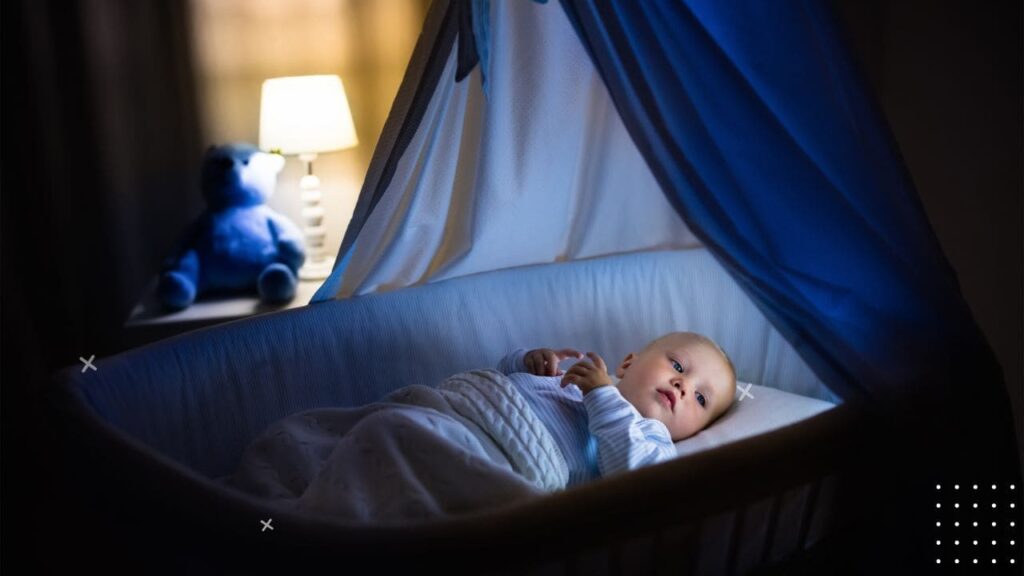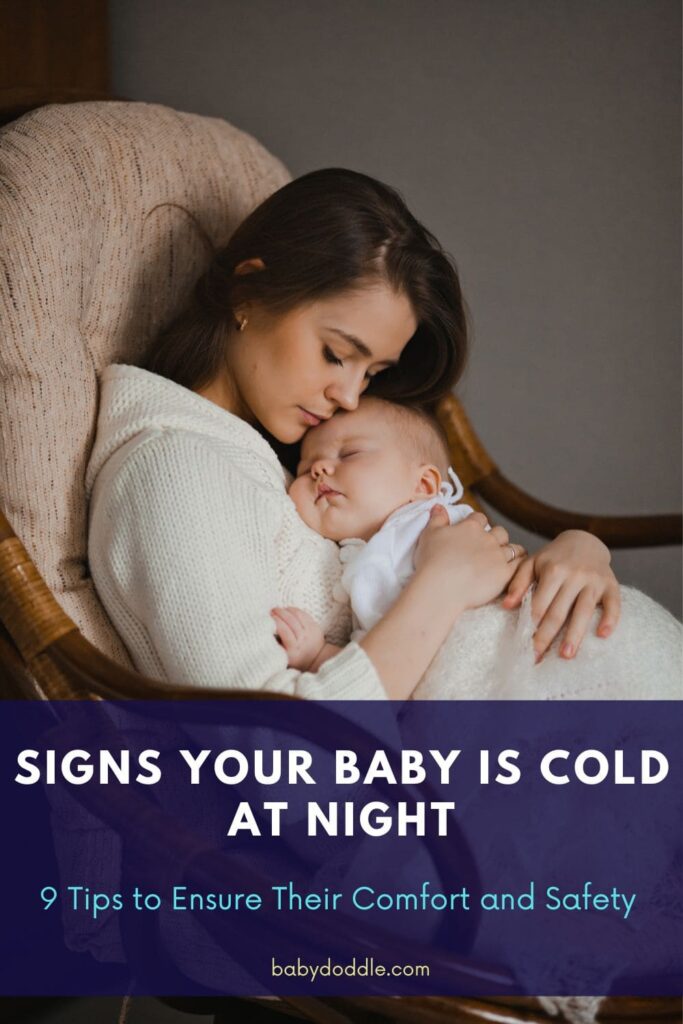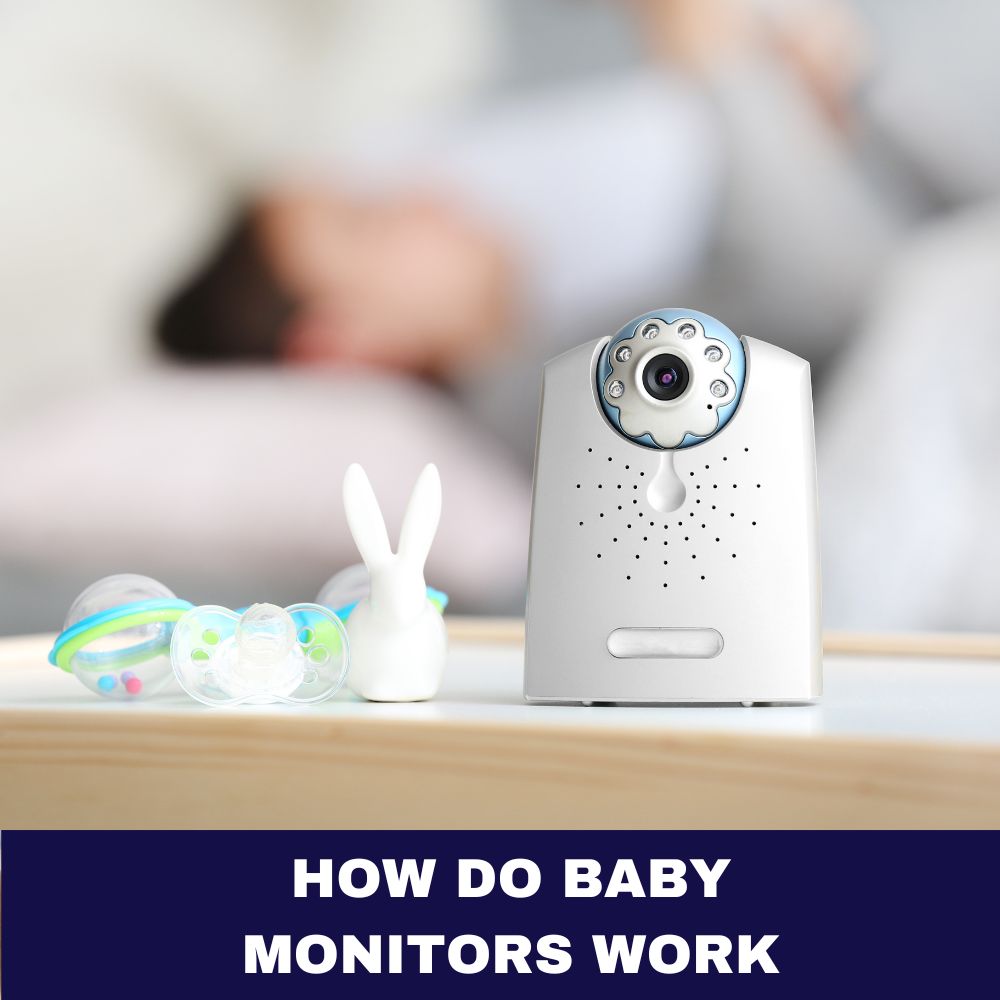As a parent, ensuring your baby’s optimal comfort and safety is always top priority. One key aspect of this is monitoring their temperature, especially at night when they are sleeping. It can be tricky to identify signs your baby is getting too cold while they slumber peacefully in their crib. Knowing what to look for and how to gently warm your little one can help prevent disrupted sleep and potential health risks.
In this post, we will overview some key signs that indicate your baby may be getting chilly at night along with helpful tips to keep them cozy. With a few simple adjustments to their sleep attire, room temperature, and soothing techniques, you can have peace of mind knowing your baby’s needs are covered.

Why Temperature Regulation Matters
Before diving into the signs of coldness, it’s helpful to understand why temperature regulation is so crucial for infants. As you likely know, babies are unable to effectively regulate their own body temperature yet. Without the ability to shiver to generate heat or sweat to cool down, they rely on parents to create an external environment that maintains a comfortable temperature.
If babies become either too hot or too cold for an extended period, it can impact their sleep cycles. Research has shown that optimal room temperature leads to longer periods of deep sleep and fewer partial arousals during the night. Given that regular sleep cycles are key to your baby’s growth and development, temperature deserves special attention.
On a more serious note, studies have also indicated a link between overheating and an increased risk of sudden infant death syndrome (SIDS). So ensuring baby does not become sweaty and overheated overnight should be a top priority. Now let’s look at some telltale signs to watch out for that signal your little one may be feeling chilly.
| Age | Temperature Notes |
|---|---|
| Newborn | Cannot shiver or sweat Needs consistent ambient temperature |
| 3-6 months | Begins sweating to cool down Avoid overbundling |
| 1 year | Able to help regulate temperature Dress appropriately for room conditions |
| 2 years | Moving around generates more heat Watch for signs of overheating |
6 Subtle Signs Your Baby is Too Cold at Night
Since babies can’t just tell you “Hey, I’m freezing in here!”, you have to decode physical and behavioral cues. Here are some of the most common indicators that your little one may be too cold while sleeping:
1. Cool chest or neck
Gently touch the center of your baby’s chest or back of the neck. Does their skin feel cool or cold to the touch? This is one of the most reliable indicators of body temperature. If these areas are noticeably cooler than their extremities, it likely means baby is cold overall.
2. Restlessness and waking
Does your normally sound sleeper seem to be stirring more often or having trouble settling? Frequent waking or restless sleep can signify discomfort from chilliness.
3. Curling up
When babies are cold, you may notice them trying to conserve body heat by curling up tightly into a ball. This clenched position is a self-soothing technique against feeling chilly.
4. Clammy skin
While damp, sweaty skin is a sign of overheating, clammy cool skin can indicate a baby is getting too cold, especially around the neck, chest, or torso area.
5. Pale skin
Have you noticed your baby’s skin looking extra pale or blotchy, potentially with a bluish tint around the mouth or hands? This blood circulation change results from the body preserving heat by redirecting blood flow away from the extremities.
6. Shivering
Occasional isolated shivers are normal, but consistent trembling or shivering is the most obvious sign of feeling cold. If your baby’s legs or arms are noticeably shaking, it likely means their body temperature has dropped too low.
Paying attention to these types of signs while your baby sleeps can clue you in to potential chilliness before it leads to disrupted rest or other problems. If you observe any of these indicators, there are several easy techniques you can use to gently warm them up again.
| Signs of Chilliness | Signs of Overheating |
|---|---|
| Cool chest or neck | Sweaty neck or chest |
| Pale, blotchy skin | Flushed, red skin |
| Frequent waking | Restless sleep |
| Shivering | Heat rash |
| Curling up tightly | Kicking off blankets |
| Clammy skin | Damp hair |
Ideal Room Temperature for Infants
Before we get into specific soothing techniques, let’s discuss optimal room conditions, since ambient temperature plays a huge role. The recommended bedroom temperature range for infants is 68-72°F (20-22°C). This neutral setting helps prevent overheating or chilling.
Of course, maintaining a consistent temperature throughout the whole night is easier said than done! Here are a few tips:
- Use a thermometer to frequently check the temperature, adjusting the thermostat accordingly.
- Don’t rely on feeling hot or cold yourself as a gauge. Adults have a drastically different metabolic rate than babies.
- If using a space heater, position it far from cribs and never leave powered heaters unattended.
- Avoid drafts from windows, fans, or air vents blowing directly on the crib area.
With the proper room temperature and some cozy attire, your little one can comfortably doze off.

Dressing Baby Appropriately for Sleep
In addition to ambient air temperature, what you dress your baby in makes a big difference. Here are some tips for proper sleep attire to retain body heat:
Layer up – Use multiple lightweight layers to allow for adjustable warmth. A long-sleeve bodysuit, sweatshirt, and sleep sack offer flexibility.
Consider coverage – Footed pajamas or sleep sacks provide more coverage for retaining warmth than onesies alone.
Use swaddles – Swaddling creates a cozy, womb-like environment. But don’t overheat – watch for sweatiness.
Check the TOG rating – This measure (thermal overall grade) indicates the insulation level of sleepwear. 1 TOG is ideal for 68-72° F.
Feet matter – Ensure socks, booties, or footed pajamas to reduce heat loss from extremities.
Since babies have higher surface area-to-weight ratios, a good rule of thumb is to dress them in one more layer than you would wear at that temperature. You can always remove a layer if they end up feeling too warm.
| Room Temperature | Recommended TOG Rating |
|---|---|
| 64-68°F / 18-20°C | 2.5+ TOG |
| 68-72°F / 20-22°C | 1.0-2.5 TOG |
| 72-75°F / 22-24°C | 0.5-1.0 TOG |
Hydration
In addition to dressing babies appropriately and setting the right temperature, keeping your little one properly hydrated helps maintain a healthy body temperature.
For breastfed infants, nursing more frequently provides close contact that keeps the baby warm while also increasing fluid intake. Offer the breast whenever you notice signs of chilliness. The natural sweetness of breastmilk encourages babies to feed, even when not hungry.
If formula-feeding, you may need to provide an extra bottle overnight if the baby seems especially restless or cool to the touch. Opt for expressed breastmilk or formula – not water alone – to meet nutritional needs. Avoid introducing excessive water consumption during sleep hours, as this can disrupt electrolyte balances.
Monitor your baby’s hydration by looking for signs like a dry mouth or lack of tears. Check that they are producing the expected number of wet diapers each day. Inform your pediatrician if you observe symptoms of dehydration. With adequate nourishment, babies stay satisfied and better regulated throughout the night.

Ideal Sleepwear Materials
When choosing the right sleepwear to keep your little one warm throughout the night, material matters. Focus on natural fiber fabrics that do not retain moisture and allow airflow to the skin.
Cotton, wool, and silk are excellent options for temperature regulation. Cotton is a lightweight breathable fabric, while wool and silk have natural insulating properties to maintain warmth but not overheat. Merino wool in particular is a soft, non-itchy type that is ideal for sensitive baby skin.
Look for cotton pajamas labeled as breathable or moisture-wicking to maximize air circulation and comfort. Organic cotton or bamboo fabrics are sustainable options. Avoid bulky fabrics like flannel that could cause sweating and be uncomfortable.
For the outerwear layer, consider sleep sacks or swaddles with TOG ratings optimal for the room temperature. TOG stands for “thermal overall grade” and indicates the level of insulation provided. The higher the TOG number, the more warmth is retained. This numbering system allows you to conveniently choose the right amount of insulation needed for your nursery environment.
When shopping for sleepwear, also factor in the ease of diaper changes. Zip-up pajamas are certainly convenient, but make sure hip snaps or bottom flaps don’t hinder access for overnight diapering. The combination of cozy yet breathable fabrics and easy accessibility makes for peaceful snoozing.
Soothing Techniques for a Chilly Baby
If your baby seems cold overnight despite ideal room conditions and sleep attire, a few soothing techniques can provide supplemental warmth:
- Give a warm, not hot, bottle. The internal heat source helps raise body temperature.
- Try skin-to-skin contact, also called kangaroo care. Your bare chest directly transfers warmth.
- Offer a pacifier; sucking action helps circulate heat.
- Swaddle snugly in a wearable blanket to contain heat better.
- Use a heating pad or warm water bottle away from baby, then remove before laying them back down.
- Increase crib mattress warmth with an electric mattress warmer if air temperature can’t be adjusted.
When using any warming techniques, always check the temperature before putting your baby back into the crib. The goal is gentle, gradual warming while ensuring safety.
Warning Signs to Call the Pediatrician
While most coldness can be rectified with the above methods, severe or repetitive chilling calls for medical evaluation. Seek pediatric guidance immediately if your baby has any of the following:
- Body temperature below 97°F rectally
- Skin that is very pale, blue, or blotchy
- Intense, uncontrollable shivering
- Lethargy or trouble breathing
- A high fever concurrent with feeling chilled
These symptoms could indicate a dangerous drop in body temperature (hypothermia), respiratory distress, or other underlying illness. Your pediatrician can determine if any treatment is needed.
Setting up a Warm, Cozy Environment
Along with responding to over-chilling in the moment, prevention is also key. Here are some proactive steps you can take to maintain a comfortably warm sleep space:
- Set the thermostat to 68-72°F nightly.
- Use a portable heater or humidifier if the room still feels cold.
- Select pajamas rated for proper insulation.
- Avoid bathing right before bed to prevent chilling.
- Check neck & chest regions for comfort.
- Swaddle for that womb-like containment.
- Offer a pacifier to support self-soothing.
- Make sure baby is properly fed and hydrated before bed.
Adjusting Daytime Temperature
While this article has focused on overnight chilling, maintaining proper temperatures during naps and awake time is equally important for your baby’s health and regular sleep cycles.
The recommended temperature range for babies when awake and active is 68-75°F or 20-24°C. This accommodates natural fluctuations in body temperature from moving around and playing. Sitting still while you read stories or feed them may call for settings closer to the nighttime norms.
If coming in from chilly outdoor temperatures, allow adequate time for your baby’s body to readjust to indoor conditions before putting them down to sleep. You may even need to remove an outer layer that was necessary outside to prevent overheating upon returning home.
When babies are active during playtime, also check for signs of overheating like flushed cheeks or sweaty hairlines. Increased movement generates more internal heat, so have blankets or extra layers handy in case your little one seems chilled after stirring from a nap.
Consistency in both nighttime and daytime temperatures will help reinforce your baby’s circadian rhythms and sleep-wake cycles.
Conclusion – Signs Your Baby is Cold at Night
With attentiveness to their needs, restful nights await! Remember that babies thrive on routine and consistent sleep conditions. By being proactive and swiftly addressing any chilly discomfort that arises, you can ensure your little one sleeps soundly through the night. Pleasant dreams!
FAQ – Signs Your Baby is Cold at Night
What temperature should the nursery be for a newborn?
The optimal nursery temperature for a newborn is 68-72°F (20-22°C). Newborns cannot yet regulate their body temperature, so maintaining a consistent ambient room temperature in this range will prevent them from getting too hot or cold. Use a thermometer to check the temperature at crib level.
How many layers should you put on a baby for sleep?
A good rule of thumb is to dress your baby in one more layer than you would wear to be comfortable in that environment. Outfit them in breathable natural fabrics like cotton, wool, or silk. Use multiple lightweight layers for adjustable warmth. Footed pajamas and sleep sacks are recommended. Take care not to overbundle to avoid overheating.
Is it OK for babies to sleep with blankets?
Babies under 12 months should not sleep with loose blankets because of the risk of overheating, breathing obstruction, and SIDS. Swaddling with a thin muslin blanket until 2-3 months is recommended. After that, transition to a wearable blanket sleep sack for warmth without loose bedding hazards.
How can I tell if baby is too hot or too cold overnight?
Check their chest, neck, or back to see if it feels hot or cool to the touch. Other signs like sweating, damp hair, red cheeks or ears indicate overheating. Paleness, blotchy skin, hands curling into fists and shivering are cues for being too cold. Babies are unable to adjust their temperature on their own, so monitoring for these signs is key.
What’s the difference between a sleep sack and swaddle?
A swaddle blanket wraps snugly around a baby’s body with their arms pinned to prevent the startle reflex. It’s used for newborns up to 2-3 months. A sleep sack is worn over pajamas and zips up to provide warmth without constricting older babies’ movements. Sleep sacks are safer than loose blankets.
How can I warm up my baby if they get chilled overnight?
If your baby seems cold, add another layer or wrap them snugly in a wearable blanket. Offer a pacifier for sucking action that generates warmth. Give them a warm (not hot) bottle. Try safe skin-to-skin contact or gentle rocking. Never place a baby directly on a heating pad or electric blanket.
At what age can a baby start using a blanket?
Once your baby is at least 12 months old and can push a blanket away from their face, it is generally safe to introduce a lightweight breathable blanket in the crib. But a wearable blanket sleep sack is preferable to loose bedding for babies under 2 years old.
How warm should baby’s pajamas be for winter?
In colder months, look for footed pajamas rated for warmth appropriate to your nursery temperature. Cotton, wool, or fleece are good cold weather materials. Choose a higher TOG rating for more insulation. Multiple lighter layers allow you to adjust as needed. Keep babies cozy but not overly bundled.
Should I use a space heater in the nursery?
Using a space heater in the nursery is generally not recommended due to safety concerns. Space heaters can overheat and pose fire risks, especially when left unattended. They also create uneven heat distribution that can lead to cold and hot spots in the room.
Instead, adjust the central thermostat to maintain a consistent ambient temperature of 68-72°F throughout the whole nursery space. Make sure the crib is not placed directly next to or in front of vents or radiators where air flow is concentrated. Use warm sleep attire and swaddling to provide localized warmth to your baby if needed.
If you do opt to use a space heater, choose a newer model with safety features like automatic shut-off. Position it far away from cribs, never leave powered heaters unattended, and prevent cords from being accessible. But central heating systems are safest for regulating nursery temperatures.












